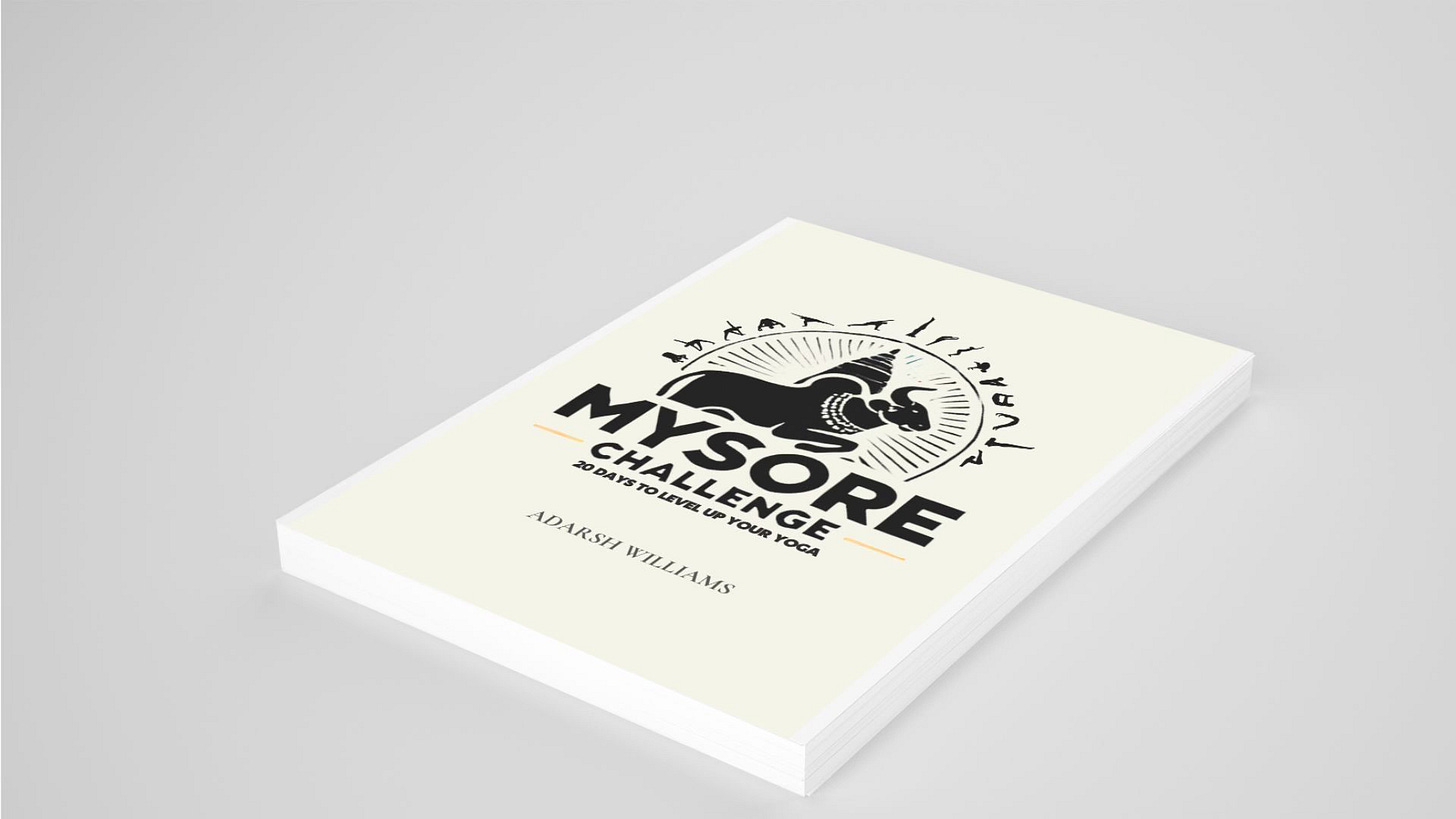MYSORE CHALLENGE DAY 12
Baddha Konasana A,B
FOLLOW ALONG VIDEO
Welcome to Day 12 of the Mysore Challenge.
Welcome to Day 12 of the Mysore Challenge. Today, we begin Baddha Konasana A and B, the Bound Angle Pose. These poses are among the most traditional hip openers in yoga. They promote flexibility in the hips, groin, and inner thighs while helping you connect to the dip pelvic muscles that form mula bandha.
Baddha Konasana has two primary variations:
Baddha Konasana A involves sitting with the soles of your feet together and your knees pressing outward. Keeping the back straight as you hinge from your hips.
Baddha Konasana B builds on the first variation by flexing the spine forward, deepening the stretch and encouraging a more profound release in the lower back and hips.
Baddha Konasana is also known as the "cobbler’s pose" because it resembles the sitting position traditionally used by cobblers (shoe makers) in India. This pose is a "primordial hip opener" because of its deep connection to the pelvic region.
Benefits of Baddha Konasana A & B:
Functional Movement Benefits:
Hip flexibility: This pose promotes flexibility in the hips and groin, improving mobility and reducing tightness in the hip joints.
Pelvic stability: The engagement of the pelvic floor in Baddha Konasana helps stabilize the pelvic joints, supporting balance and alignment.
Inner thigh stretch: Baddha Konasana stretches the inner thigh muscles (adductors), reducing stiffness and increasing range of motion.
Health Benefits:
Improved circulation: The pose encourages blood flow to the pelvic region, benefiting reproductive and digestive health.
Relief from menstrual discomfort: This pose is known to relieve discomfort during menstruation by promoting circulation and reducing tension in the pelvic region.
Calming effect: Baddha Konasana has a grounding, calming effect on the mind, helping to reduce stress and anxiety.
Effects on Mind and Meditation:
Inner focus: The introspective nature of this pose encourages mindfulness and self-awareness, helping to calm the mind and promote relaxation.
Emotional release: Hip openers are known for their ability to release stored tension and emotions, promoting a sense of inner peace.
Traditional Yoga Benefits:
Activating the root chakra: This pose stimulates the Muladhara (root) chakra, promoting stability and grounding energy in the body.
Balancing energy: Baddha Konasana is believed to balance the energy in the pelvis, promoting the flow of prana and supporting reproductive health.
Tips for Baddha Konasana A & B:
Progression:
Elevate the hips: If the inner thighs are tight, sit on a block or cushion to help tilt the pelvis forward and allow for a deeper stretch.
Use contract/relax techniques: Press the thighs into your hands during an inhale, then release and deepen the stretch on the exhale. This can help overcome stiffness in the adductors.
Common Problems or Misalignments:
Tight inner thighs: If the inner thighs are very tight, focus on elevating the hips and practicing gentle contract/relax techniques to gradually open the hips.
Collapsing the spine in Baddha Konasana A: Keep the spine long as you fold forward in the A variation, hinging from the hips rather than rounding the back.
Overstretching: Make slow, steady progress to flexibility and avoid overstretching the pelvic muscles.
Progressing the Pose:
Deepen the forward fold: In Baddha Konasana B, focus on lengthening the spine and folding deeper into the pose with each exhale, allowing for a deeper release in the hips and lower back.
Engage the pelvic floor: As you practice, engage the pelvic floor (Mula Bandha) to stabilize the hips and support the stretch.
Baddha Konasana A & B offer a deep stretch for the hips, groin, and inner thighs while promoting relaxation and grounding. These postures provide an essential balance to the more dynamic sequences of Ashtanga, helping to calm the mind and prepare the body for deeper seated postures and meditation.
Baddha Konasana - Vinyasa Sequence 15
7. SAPTA: Inhale: Step or jump through your arms to a seated position with your legs straight. While still inhaling, bend both knees outward, bringing the soles of your feet together. Move the feet close to your body, depending on your range of motion.
8. ASTAU: Exhale: Hinge forward from the hips, keeping your back straight. As your pelvis tilts forward, move your chest toward the floor. Rotate your thighs outward (external rotation) as you enter Baddha Konasana A. Hold for 5 breaths, with your gaze (Drishti) toward your nose.
7. SAPTA: Inhale: Return to an upright seated position.
8. ASTAU: Exhale: Flex your spine, bringing your nose toward your navel, then continue lowering your head toward your insteps for Baddha Konasana B. Hold for 5 breaths, maintaining Drishti toward your nose.
9. NAVA: Inhale: Return to an upright seated position.
Exhale: Place your hands on the floor beside you.
10. DASA: Inhale: Lift your hips for a brief L-sit or lift-off.
11. EKADASA: Exhale: Jump back to Chaturanga Dandasana.
12. DVADASA: Inhale: Move into Upward Facing Dog (Urdhva Mukha Svanasana).
13. TRAYODASA: Exhale: Transition into Downward Facing Dog (Adho Mukha Svanasana),







